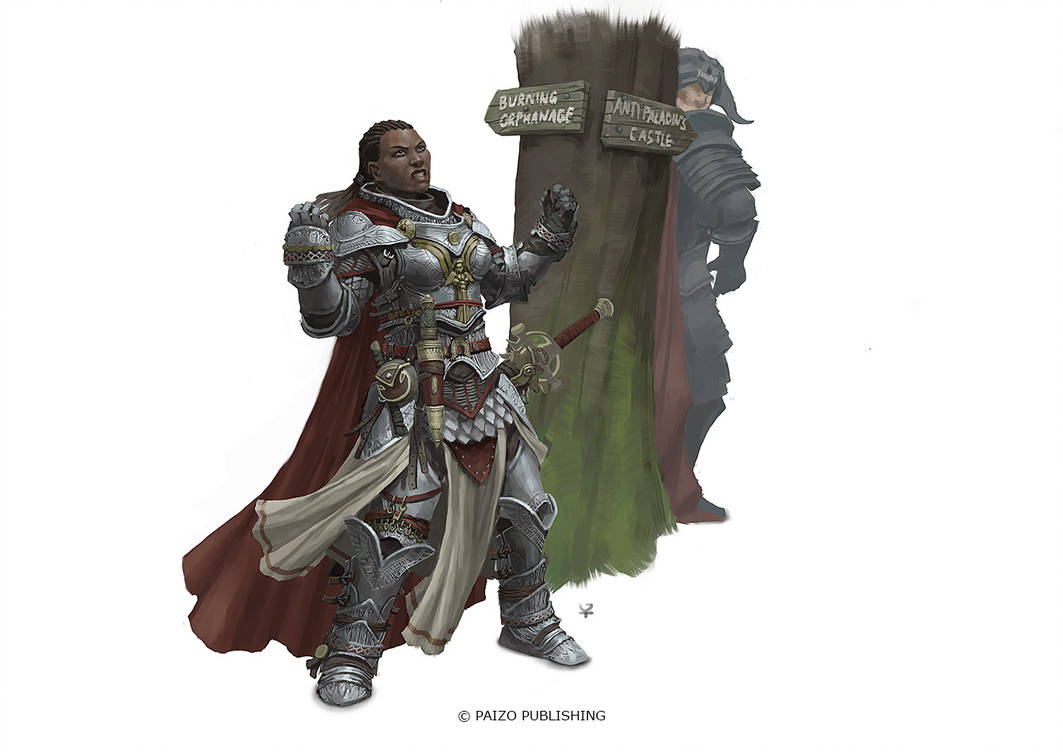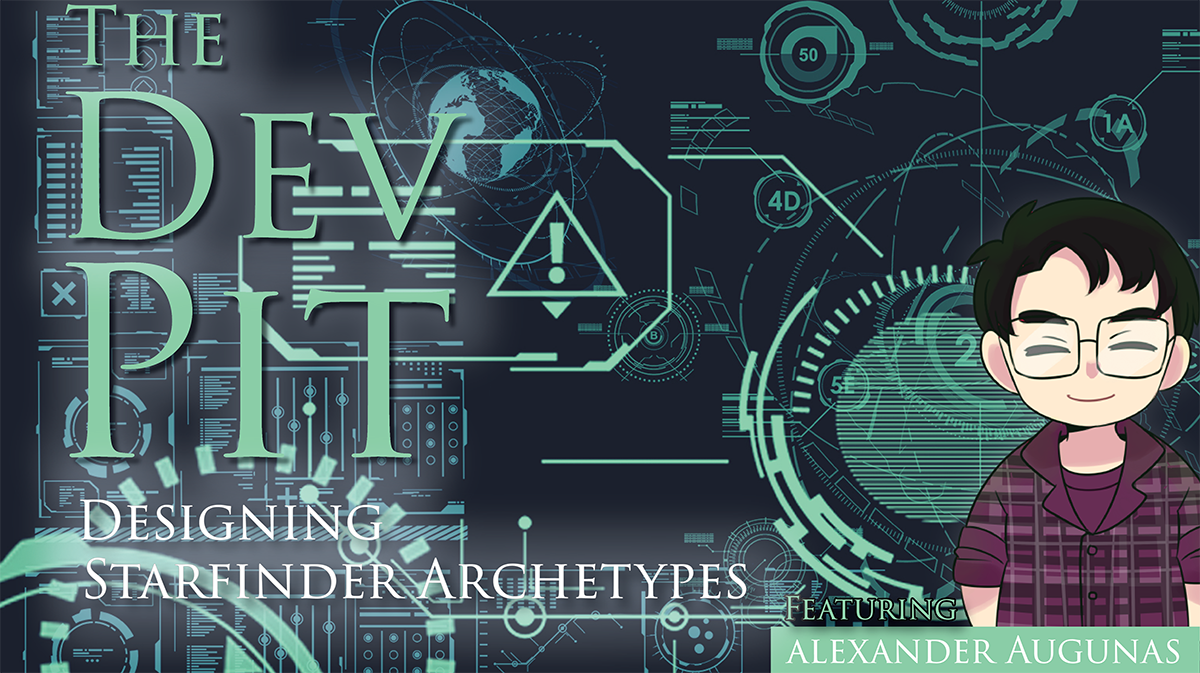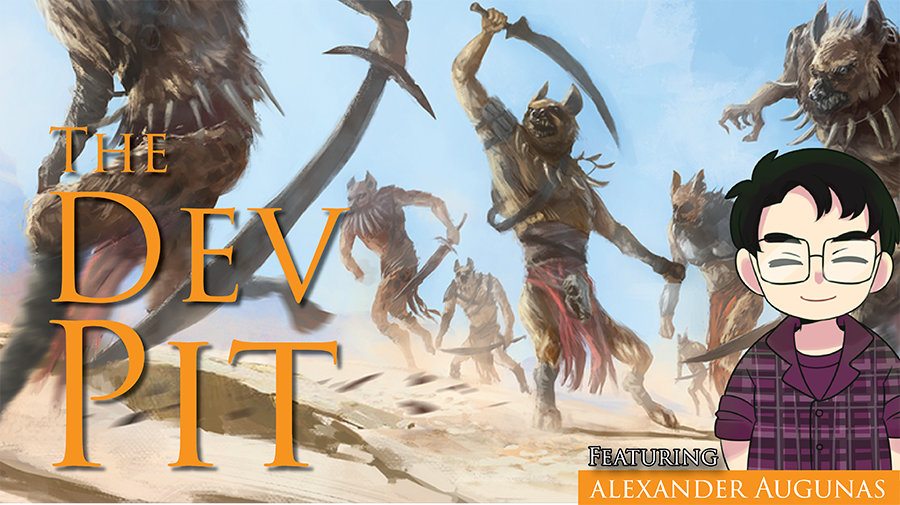Hello and welcome to the Dev Pit! My name is Alexander Augunas, the Everyman Gamer, and I’m hoping to use this new blog format to talk a bit about the designing process for tabletop RPGs. I’m planning on covering a wide array of topics here, and I want to make sure that I answer any questions that my wonderful readers have, so if you get to the end of this article and have a question, head on over to our Know Direction Discord server and ask away!
Before we get started with today’s topic, I want to address a simple question: Why. Why did I decide to shelf Guidance for a new series of articles on game design? Frankly, I decided that since our awesome team includes some top-notch game designers, from Ryan Costello, who designs all sorts of wacky games for Blind Ferret, to Luis Loza, who is one of two designers working on the upcoming World Guide line for Paizo’s second edition of the Pathfinder RPG, one of us should probably spend some time talking a bit about the nuts and bolts of game design, from philosophy to why some mechanics just don’t work at the table. Since the designers out of our regular blog-writing staff include Vanessa, Ryan, Luis, and myself, this basically meant that one of us would have to stop doing one of our articles to provide you with this kind of content, and I felt that Guidance was the easiest blog to lose compared to the likes of Craft Adventure or Behind the Screens, as the three of these have a similar niche. Don’t worry though, I plan on keeping Iconic Design around on a biweekly schedule; we need some player-facing content on this site!
Okay, with that out of the way let’s look at our first topic: Design as an art.
The Art of Game Design

“Let’s hope them boys got some good shocks on their car, or they’re in for the wedgie of a lifetime!”
When we talk about game design, we often think in terms of numbers and equations.
My players need to be able to hit their foes 60% of the time to “feel good”.
My players need to spend 25% of their resources on an encounter of this difficulty.
The monster needs to be able to do X damage at Y CR.
These are all mechanical components of game design, “mechanical” referring to the innermost mechanics of how the system runs. Just as a clock’s gears makes its hands turn or a combustion engine rotates a car’s axels forward, a game’s mechanics are the rules that make a game work the way the designer intends it to. But we as designers often tend to focus on the “mechanics” of game design over the “art” of game design, and that can be a problem when you’re looking to make a fun, engaging play experience.
If you ask an ordinary person about what the “art” of game design does for a game, they might tell you that it’s flavor or some other form of dressing that goes on top of the rules to make them more palatable. For example, they might liken the art of game design to a sleek chrome finish or a radical paint job. And while a good RPG needs a fantastic story and setting to give context to the rules, the art of game design is less about the flavor or the dressing and more about the aesthetics. Someone with good artistic design knows how to make a game that’s enjoyable to play, and a better car-based analogy would likely include car parts like the muffler or the shocks. On a car, these parts are specifically designed to minimize (or outright eliminate) unpleasant parts of the driving experience. If you don’t have a muffler, your engine makes a loud clattering sound that’s just the absolute worst to listen to. If you don’t have shocks, every small bump makes everything inside your vehicle go flying.
An artistic mastery over game design allows you to minimize the part of your game that isn’t fun while drawing attention to the parts that are: it lets you drive without the inconvenient parts of the combustion engine that makes the whole machine work.
An Example Using PF2

“AAAAAARGH! WHY DID THE DESIGNERS MAKE IT SO HARD TO LEARN NEW SKILLS?!”
Let’s take the principal of artistic game design and take a look at a major change made to Pathfinder 2 when comparing it to Pathfinder 1.
- In Pathfinder 1, whenever you gain a new level you gain a preset number of skill ranks that you can use to improve your odds at succeeding with any of the game’s skills. You can spend these skill ranks however you want so long as the number of ranks invested into a single skill doesn’t exceed your total character level.
- In Pathfinder 2, you get to bump up your mastery level in a number of specific skills of your choice. You have one scaling bonus if you’re untrained, a different scaling bonus if you’re trained, and your bonus gets a flat modifier for every step above trained that you’ve acquired.
If we look at these two mechanics from a mechanical perspective, PF2’s use of proficiency is essentially designed so that it spends your skill ranks for you. Instead of having to pick point by point how good you are at something, you can simplify; I am great at skills X, Y, and Z. This simpler system has a number of obvious mechanical disadvantages to Pathfinder 1’s system in that you can’t just suddenly pick up proficiency in a skill that you weren’t proficient with already. There’s very little “branching out” to be “kinda good” with new skills. From what we’ve seen in PF2, you’ll need to wait until the game tells you that you can improve your proficiency with a new skill and that can certainly be less than favorable to the dilettante.
However, consider the following: in Pathfinder 1, the most important skills have DCs that constantly increase as your level gets higher. You always need more Perception to have a chance to win the endless arms race against opposed Stealth checks and more Sense Motive allows you to defend against the higher Bluff of high-level characters. Both of these statements are true in reverse as well. You need more Acrobatics to tumble around higher-level foes, more Craft skills to craft better items, more Knowledge skills to recall lore about higher-level creatures and threats, and so on. It is fairly safe to say that, as a result, PF1 is a game that lets you put skill ranks anywhere but if you don’t focus on a few skills, your abilities risk being irrelevant in higher-level play. From a design perspective, PF1’s skill point system provides an illusion of choice, and choosing wrong can result in a character that simply isn’t fun to play at the table.
Does this mean that PF2’s skill system is better than PF1’s in every way and that you should feel bad for liking it? No, for the same reason that some people go out of their way to remove their car’s shocks so they can bounce up and down and slap suped-up engines to their cars that allow them to roar like lions over an asphalt Savannah. Those individuals have a deep love for cars and want a different experience than the general consumer. And that’s perfectly fine. But acknowledging that the simpler system with more meaningful choices is one that a wide margin of consumers are going to prefer is equally important.
In Summary,
we’ve talked about how the art of game design allows designers to make palatable choices in their games is a fundamentally important aspect of game design. An artistic approach to game design allows designers to write rules that are enjoyable for everyone at the table, and that allow players to feel confident with their game choices. While systems that allow for more under-the-hood fidelity are fantastic, ultimately many of these systems lead to situations where players (especially newer ones) make the wrong choices and are ultimately punished for their lack of mastery.
Personally, I am a strong believer that system mastery should be reinforced with a more rewarding player experience. But I also think that game design that operates by punishing players that lack that same game design isn’t good design. No one wants to buy a car that punishes its owner for not being a mechanic, so don’t design a game that punishes players for lacking fundamental understanding of your game’s design!
I hope you found this article enjoyable to read! As I mentioned earlier, I’m looking for feedback regarding what sort of topics you’d like me to cover in the Dev Pit, and look forward to your engagement! Safe travels and have a fantastic week!

Alexander “Alex” Augunas has been playing roleplaying games since 2007, which isn’t nearly as long as 90% of his colleagues. Alexander is an active freelancer for the Pathfinder and Starfinder Roleplaying Games, owns Everyman Gaming LLC, and cohosts Know Direction: Beyond with James Ballod and Jefferson “Perram” Thacker. You can keep up with Alex’s exploits on the Know Direction Discord or at his Twitter, @AIJAug.






